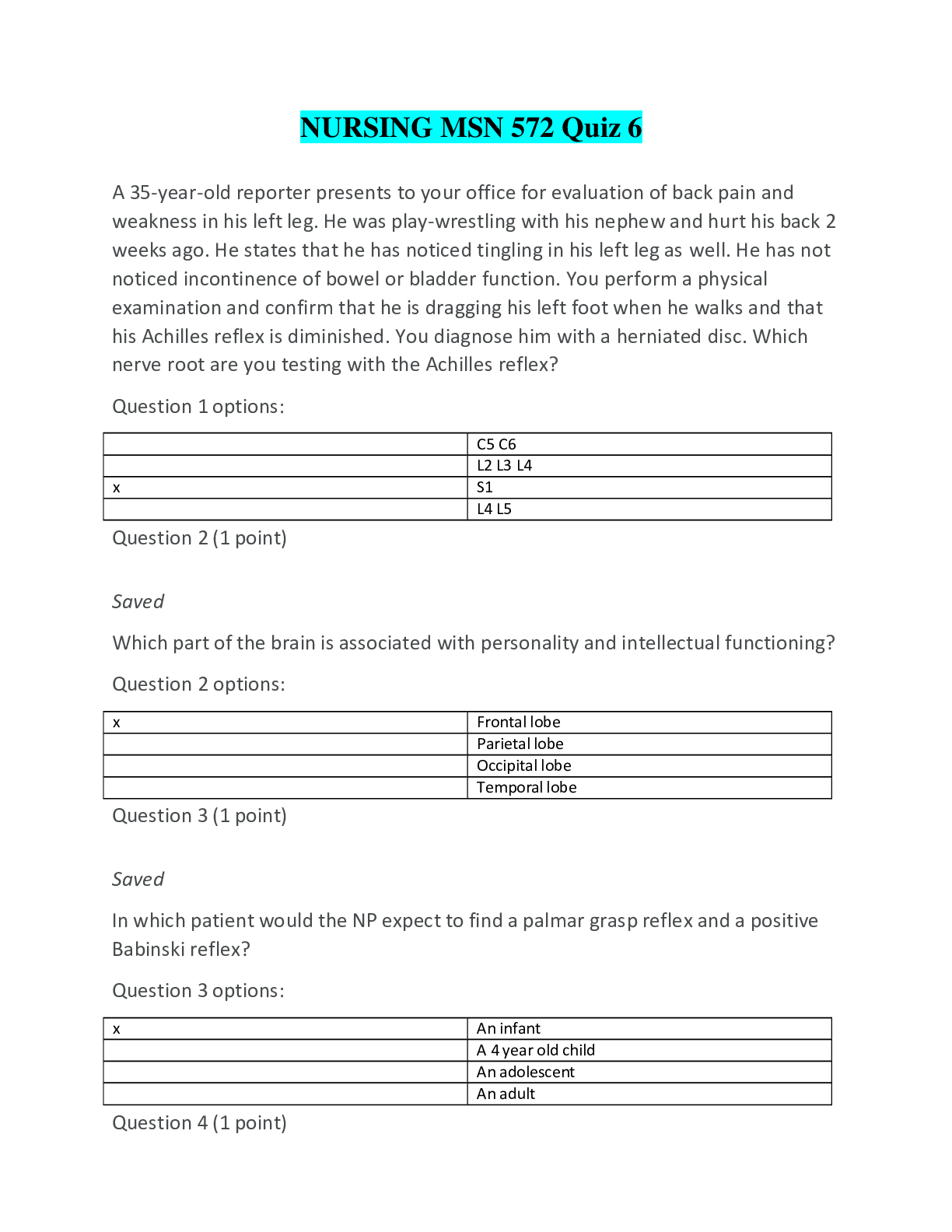*NURSING > QUESTIONS & ANSWERS > South University- NSG 6020 Week 4 Study Guide Question And Answers| Rated A (All)
South University- NSG 6020 Week 4 Study Guide Question And Answers| Rated A
Document Content and Description Below
Cardiovascular (Bickley) 35 Questions 1. You are performing a thorough cardiac examination. Which of the following chambers of the heart can you assess by palpation? A) Left atrium B) Right atrium... C) Right ventricle D) Sinus node 2. What is responsible for the inspiratory splitting of S2? A) Closure of aortic, then pulmonic valves B) Closure of mitral, then tricuspid valves C) Closure of aortic, then tricuspid valves D) Closure of mitral, then pulmonic valves 3. A 25-year-old optical technician comes to your clinic for evaluation of fatigue. As part of your physical examination, you listen to her heart and hear a murmur only at the cardiac apex. Which valve is most likely to be involved, based on the location of the murmur? A) Mitral B) Tricuspid C) Aortic D) Pulmonic 4. A 58-year-old teacher presents to your clinic with a complaint of breathlessness with activity. The patient has no chronic conditions and does not take any medications, herbs, or supplements. Which of the following symptoms is appropriate to ask about in the cardiovascular review of systems? A) Abdominal pain B) Orthopnea C) Hematochezia D) Tenesmus 5. You are screening people at the mall as part of a health fair. The first person who comes for screening has a blood pressure of 132/85. How would you categorize this? A) Normal B) Prehypertension C) Stage 1 hypertension D) Stage 2 hypertension 6. You are participating in a health fair and performing cholesterol screens. One person has a cholesterol of 225. She is concerned about her risk for developing heart disease. Which of the following factors is used to estimate the 10-year risk of developing coronary heart disease? A) Ethnicity B) Alcohol intake C) Gender D) Asthma 7. You are evaluating a 40-year-old banker for coronary heart disease risk factors. He has a history of hypertension, which is well-controlled on his current medications. He does not smoke; he does 45 minutes of aerobic exercise five times weekly. You are calculating his 10-year coronary heart disease risk. Which of the following conditions is considered to be a coronary heart disease risk equivalent? A) Hypertension B) Peripheral arterial disease C) Systemic lupus erythematosus D) Chronic obstructive pulmonary disease (COPD) 8. You are conducting a workshop on the measurement of jugular venous pulsation. As part of your instruction, you tell the students to make sure that they can distinguish between the jugular venous pulsation and the carotid pulse. Which one of the following characteristics is typical of the carotid pulse? A) Palpable B) Soft, rapid, undulating quality C) Pulsation eliminated by light pressure on the vessel D) Level of pulsation changes with changes in position 9. A 68-year-old mechanic presents to the emergency room for shortness of breath. You are concerned about a cardiac cause and measure his jugular venous pressure (JVP). It is elevated. Which one of the following conditions is a potential cause of elevated JVP? A) Left-sided heart failure B) Mitral stenosis C) Constrictive pericarditis D) Aortic aneurysm 10. You are palpating the apical impulse in a patient with heart disease and find that the amplitude is diffuse and increased. Which of the following conditions could be a potential cause of an increase in the amplitude of the impulse? A) Hypothyroidism B) Aortic stenosis, with pressure overload of the left ventricle C) Mitral stenosis, with volume overload of the left atrium D) Cardiomyopathy 11. You are performing a cardiac examination on a patient with shortness of breath and palpitations. You listen to the heart with the patient sitting upright, then have him change to a supine position, and finally have him turn onto his left side in the left lateral decubitus position. Which of the following valvular defects is best heard in this position? A) Aortic B) Pulmonic C) Mitral D) Tricuspid 12. You are concerned that a patient has an aortic regurgitation murmur. Which is the best position to accentuate the murmur? A) Upright B) Upright, but leaning forward C) Supine D) Left lateral decubitus 13. A 68-year-old retired waiter comes to your clinic for evaluation of fatigue. You perform a cardiac examination and find that his pulse rate is less than 60. Which of the following conditions could be responsible for this heart rate? A) Second-degree A-V block B) Atrial flutter C) Sinus arrhythmia D) Atrial fibrillation 14. Where is the point of maximal impulse (PMI) normally located? A) In the left 5th intercostal space, 7 to 9 cm lateral to the sternum B) In the left 5th intercostal space, 10 to 12 cm lateral to the sternum C) In the left 5th intercostal space, in the anterior axillary line D) In the left 5th intercostal space, in the midaxillary line 15. Which of the following events occur [Show More]
Last updated: 1 year ago
Preview 1 out of 23 pages
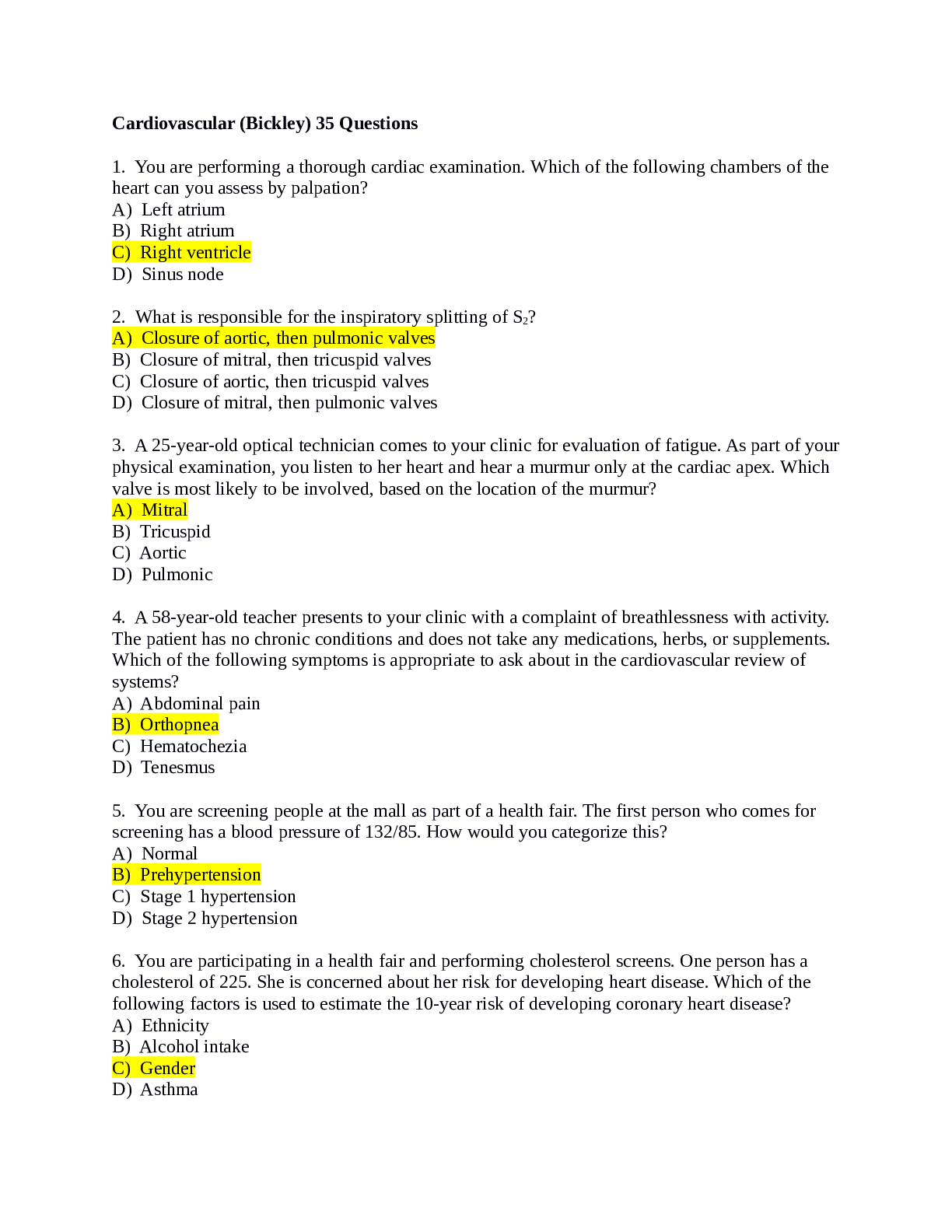
Reviews( 0 )
Document information
Connected school, study & course
About the document
Uploaded On
Apr 18, 2022
Number of pages
23
Written in
Additional information
This document has been written for:
Uploaded
Apr 18, 2022
Downloads
0
Views
61

.png)
.png)
.png)
.png)
.png)
.png)


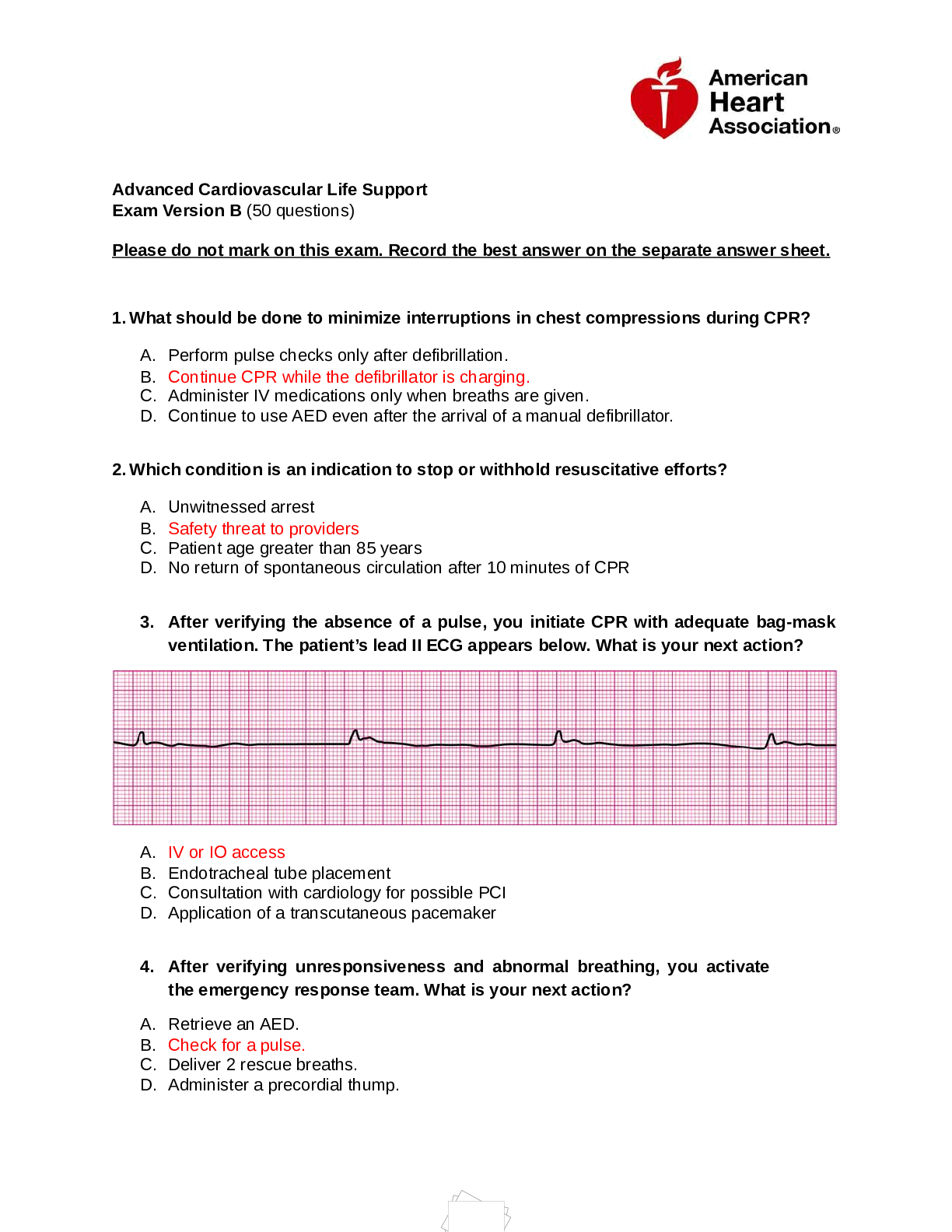


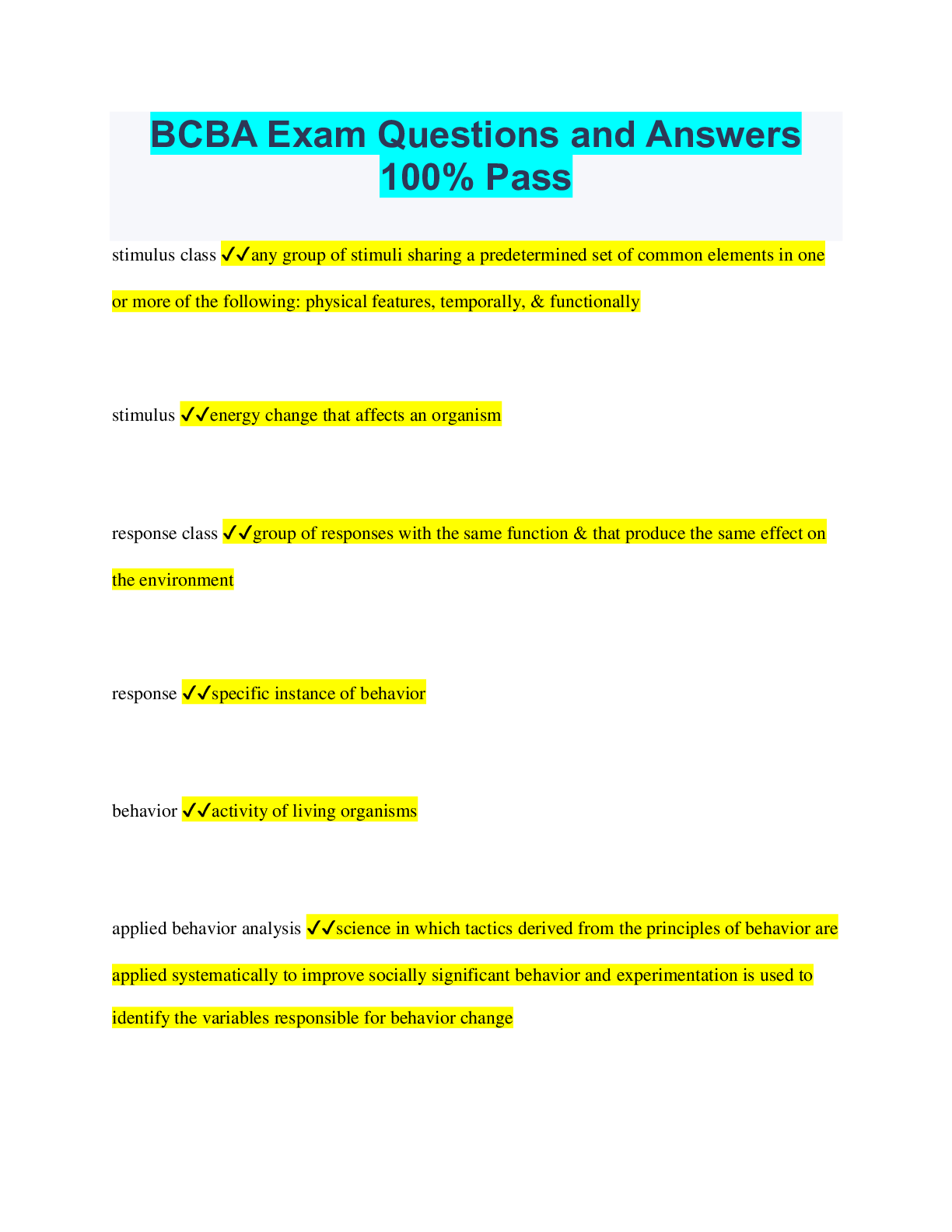
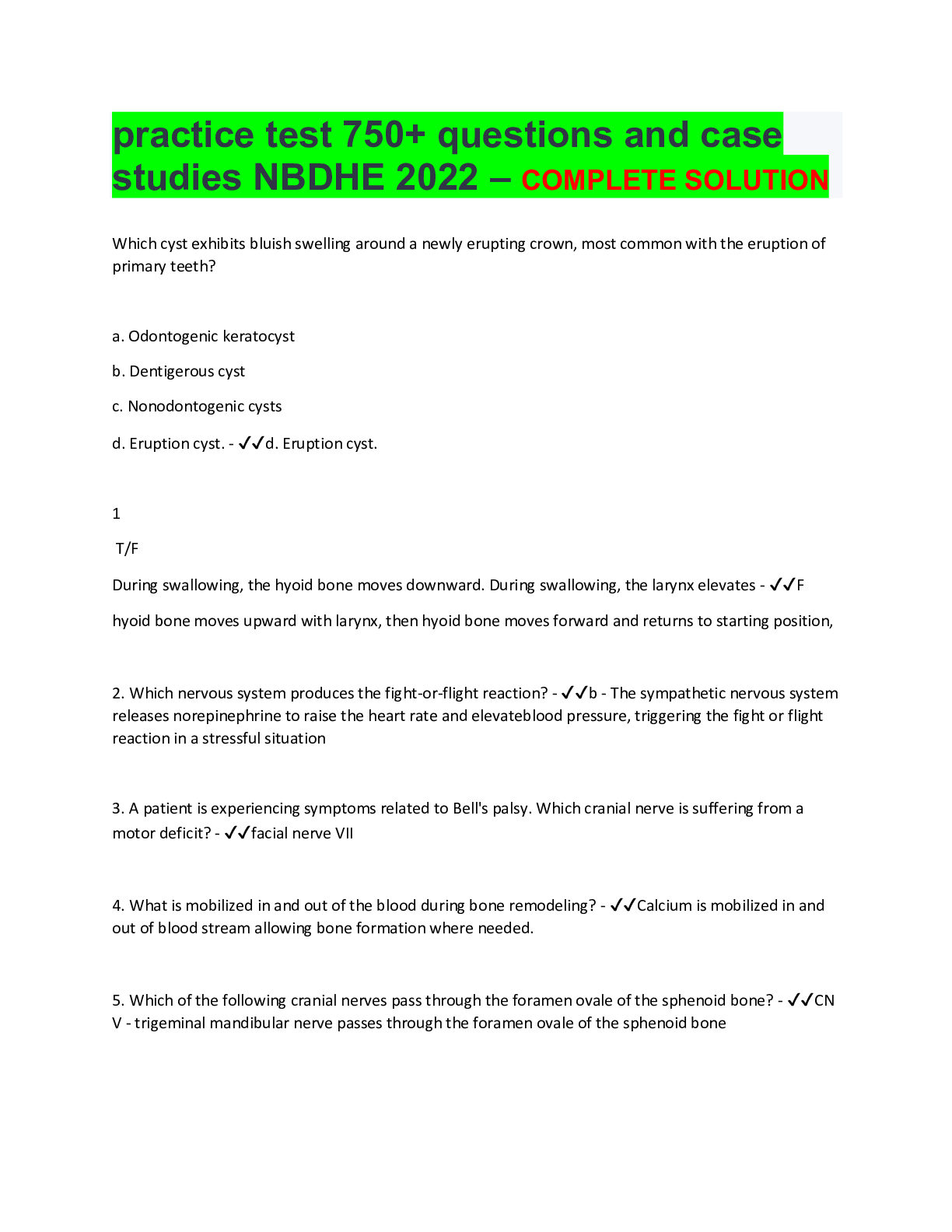
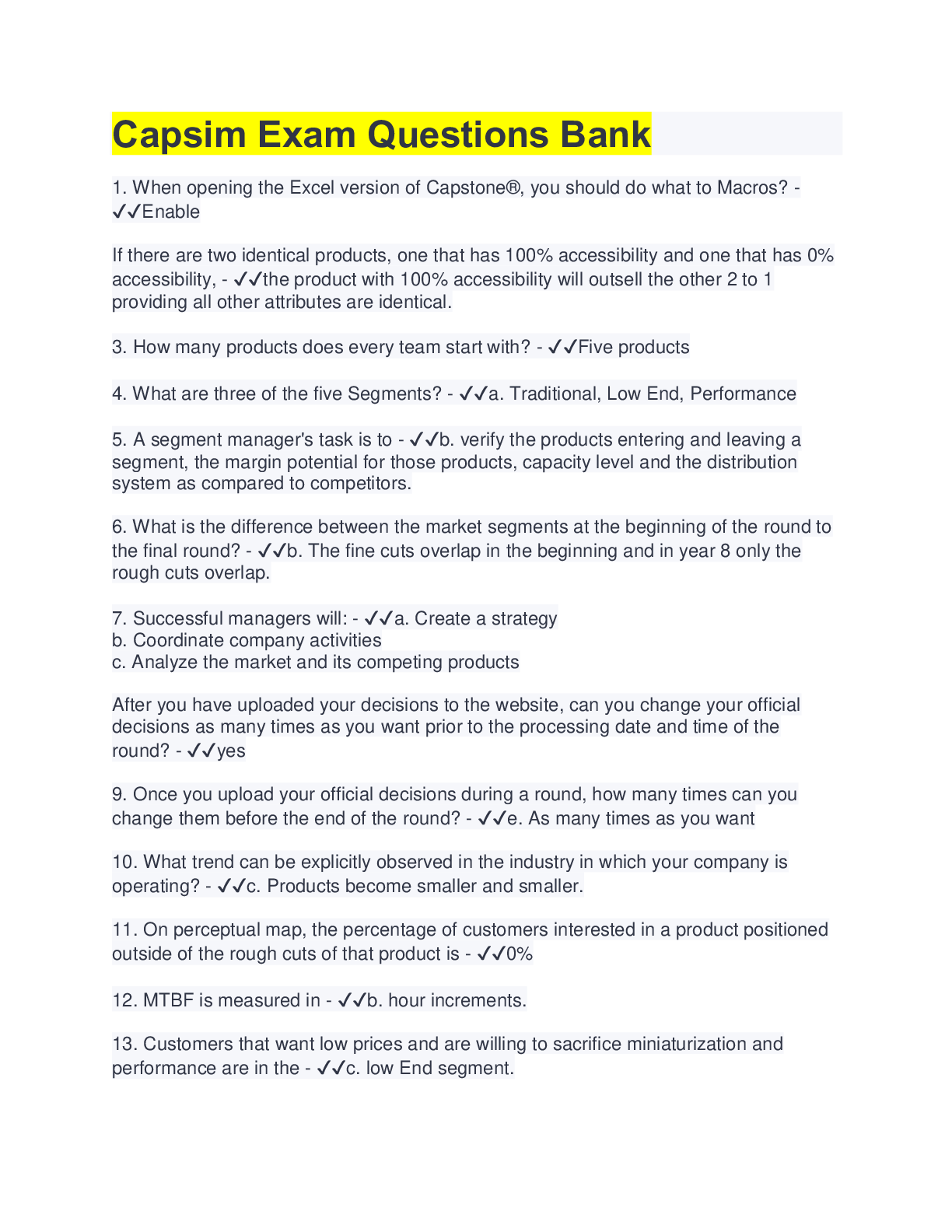





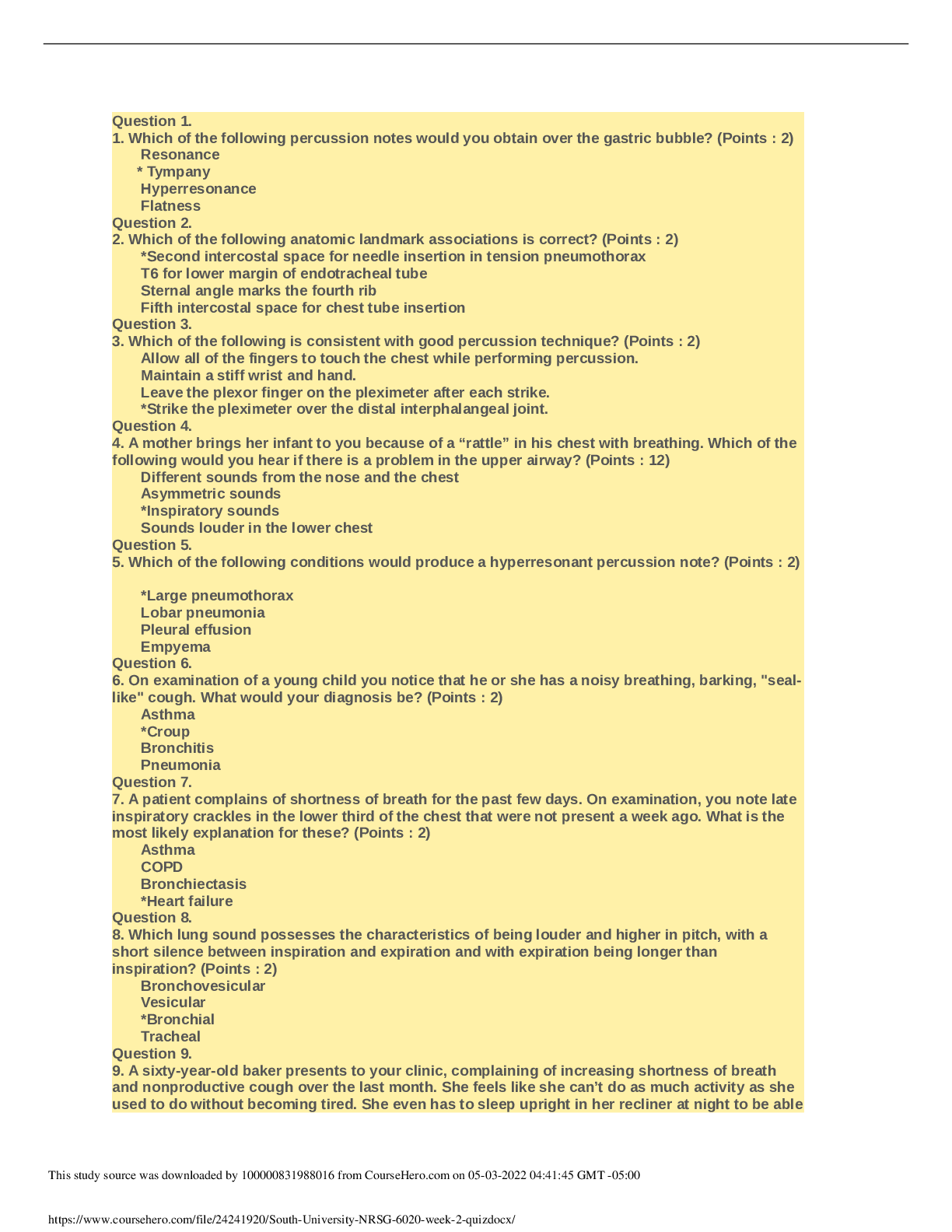


.png)
.png)



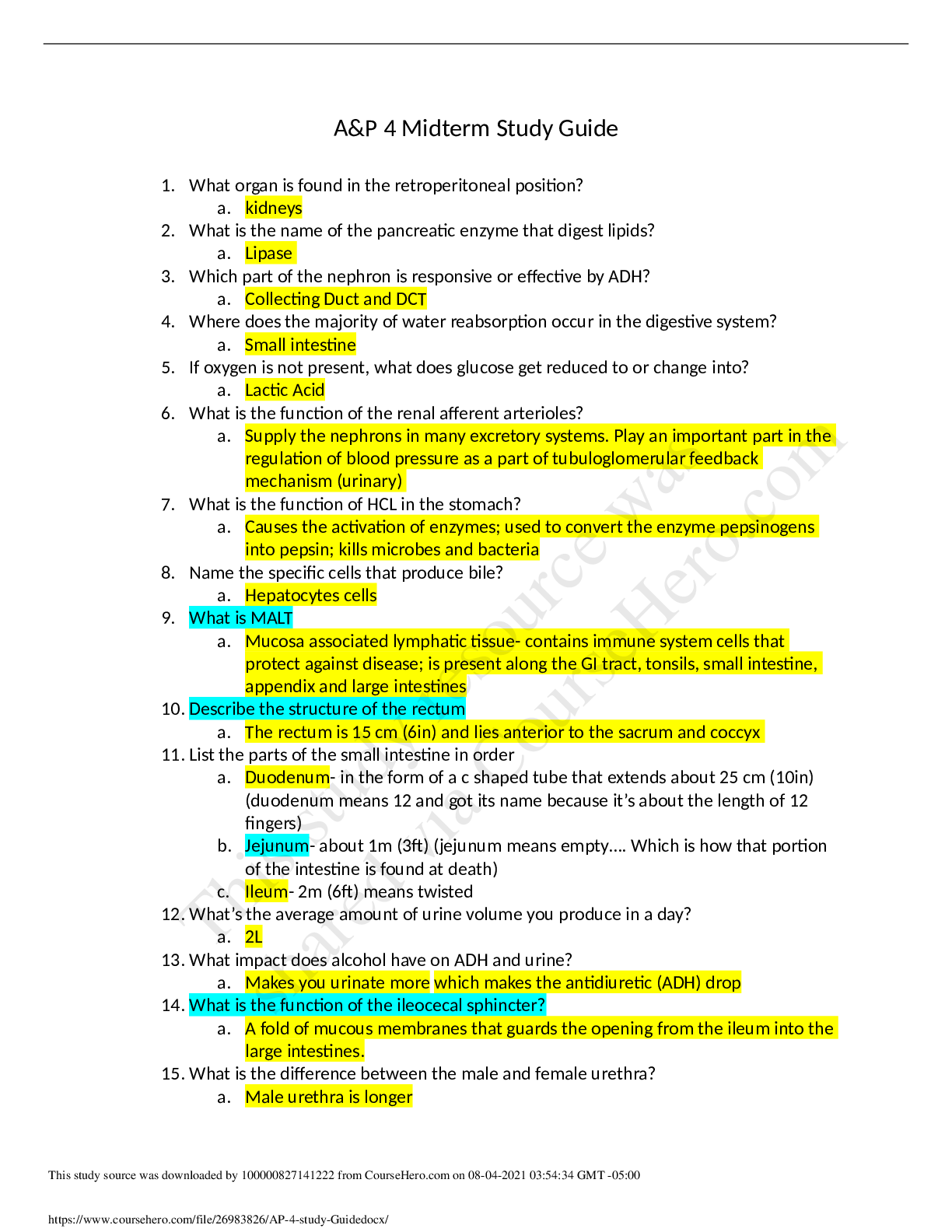

.png)
.png)
